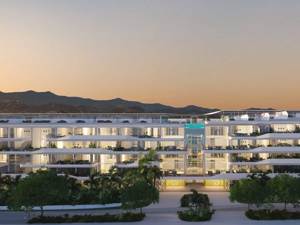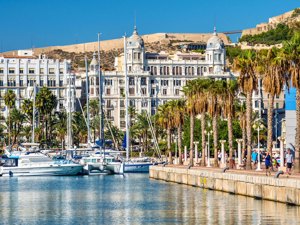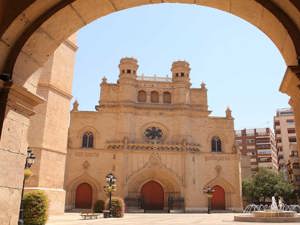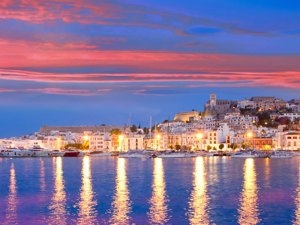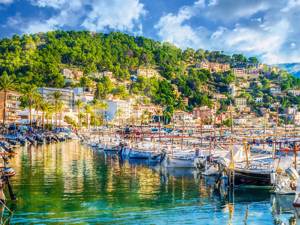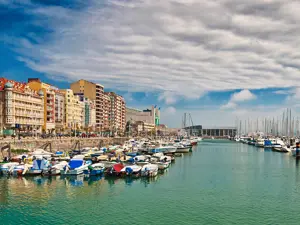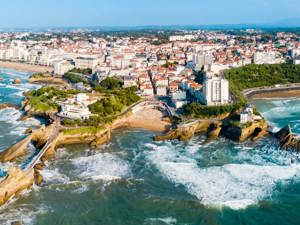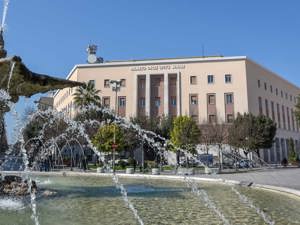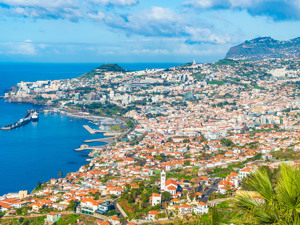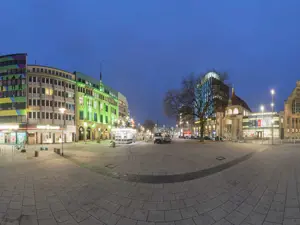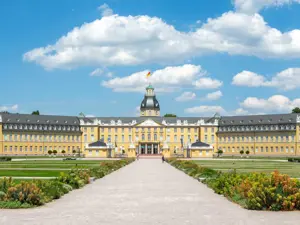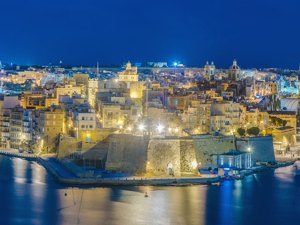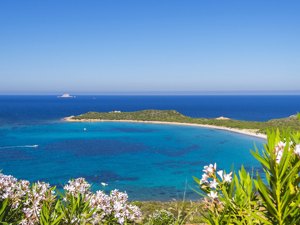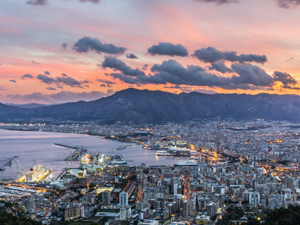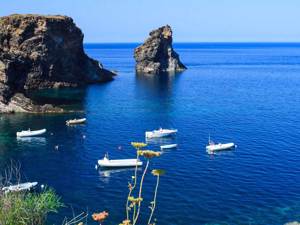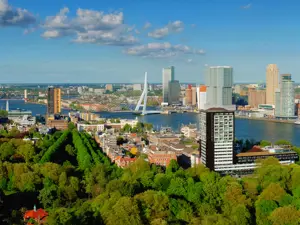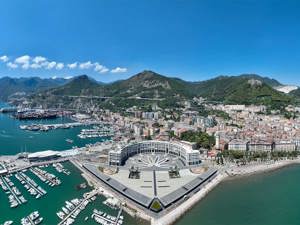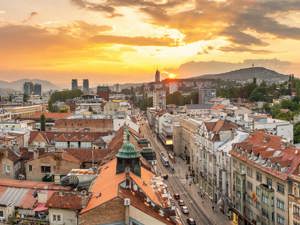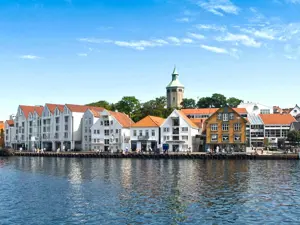The perl of Costa del Sol
Malaga, the birthplace of Pablo Picasso, has the rich and warm atmosphere of Andalusia and embodies the area’s most characteristic features.

Malaga. Photo: Sisterscom.com, Shutterstock
More than two thousand years ago, the major Mediterranean civilisations discovered that Malaga was an exceptional site in which to establish trade routes, thanks to the strategic position of its port.
The citadel of Alcazaba
The citadel of Alcazaba (8th - 11th centuries) is a symbol of the city and one of the largest Arab fortresses in Andalusia. The building houses the Archaeological Museum which preserves valuable artefacts dating back to the Phoenician and Roman eras. The Castle of Gibralfaro (14th century), joined to the Citadel by a section of wall, gives the best views of the city, which opens out onto the sea with the port and the promenade of La Farola, one of the major leisure areas in the city. At the foot of Gibrafaro Castle is the Roman Theatre, the bullring (known as La Malagueta) and the city’s historic centre.
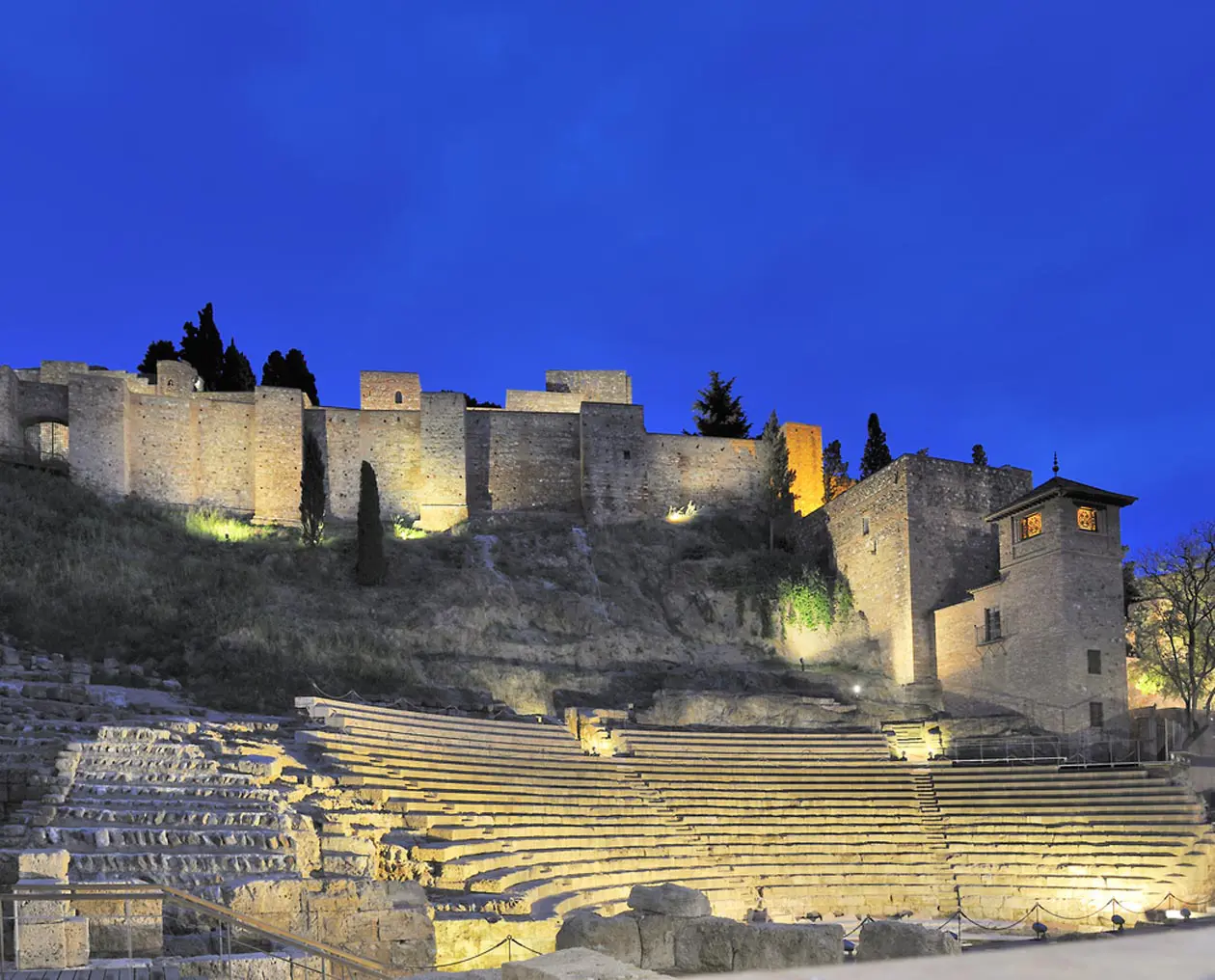
The citadel of Alcazaba. Photo: Sisterscom.com, Shutterstock
The Cathedral of Malaga
In the centre stands the Cathedral (16th - 18th centuries), also known as “la Manquita” (the one-armed woman) because its right tower was never finished.
This beautiful Renaissance structure preserves an interesting collection of chapels that house important examples of Andalusian sacred art. The old town also features other churches such as Santiago (XV-XVIII century), with a beautiful mudéjar tower, Los Mártires, Sagrado Corazón and Santo Cristo de la Salud.
 Cathedral of Malaga. Photo: Sisterscom.com, Shutterstock
Cathedral of Malaga. Photo: Sisterscom.com, Shutterstock Historic Malaga offers countless sites and interesting attractions, including the beautiful façade of the City Hall built at the beginning of the twentieth century, and Plaza de la Merced, watched over by the monument to General Torrijos, which is also home to the house where the famous painter Pablo Ruiz Picasso was born. Other attractions include the very popular Pasaje de Chinitas, Calle Granada, with the Museum of Fine Arts, or Calle Larios, the main thoroughfare of the historic centre.
Malaga also has many spacious green areas such as the Park, the Alameda Principal boulevard and the gardens of Puerta Oscura and Pedro Luis Alonso. Several of the outlying districts such as El Perchel, El Egido or La Trinidadare also worth visiting.
Malaga boasts a full calendar of traditional festivals. The most interesting is the Feria de Malaga in August, which for ten days colours the city with local costumes. The night life around the port is very lively. In particular along the promenade there are many restaurants, bars and terraces. The beach of Pedragalejo has trendy pubs and restaurants that offer traditional Andalusian cuisine.

Tapas. Photo: Sisterscom.com, Shutterstock
Specialities of Malaga
Some bars have menus offering more than a hundred different specialities. Each person can compose their own menu, also according to the season, accompanying each tapas dish with the most suitable wine.
Among the many delicious dishes enjoyed in Malaga are ham, pescaíto frito (fried fish), typical stews, prawns and crayfish, fried anchovies and ortiguillas, and secreto ibérico (particular cut of pork). The use of almonds and honey in Andalusian patisseries reveal the Arab roots of Malaga’s cuisine.
Text by Federica Fusco
Updated by Alisè Vitri
Avion Tourism Magazine
Photos for editorial use only: Copyright © Sisterscom.com, Shutterstock
Copyright © Sisterscom.com
Photos for editorial use only: Copyright © Sisterscom.com, Shutterstock
Copyright © Sisterscom.com
Video: www.malagaturismo.com
Tourism Board
www.malagaturismo.com
www.spain.info
Partnership with Booking.com
Where to sleep in Malaga

Malaga Photo: Sisterscom.com, Shutterstock
Malaga is a welcoming city and offers different possibilities for accommodation.
To find the ideal hotel and the best offers you can do a search for the stars but also for districts or landmarks.
DISTRICTS
Hotels in the districts
LANDMARKS
Hotels in tourist areas
WHERE TO GO in malaga
Monuments in Malaga

Photo: Sisterscom.com, Shutterstock
MALAGA ROMAN THEATRE
Malaga’s Roman Theatre is found at the foot of the Alcazaba hill, in the west area. It was discovered in 1951, after being buried for centuries. The construction dates back to the 1st century, the time of Emperor Augustus.

Photo: Sisterscom.com, Shutterstock
MALAGA CATHEDRAL
The Cathedral of the Encarnación is one of the most important monuments of the city. The south tower and main façade are unfinished. Situated in the historic centre of the city, this building stands on the site of the Aljama mosque. Work to build the Gothic cathedral began in the first half of the sixteenth century on the orders of the Catholic kings, and continued into the seventeenth and eighteenth centuries. It has gardens and a magnificent courtyard.

Photo: Sisterscom.com, Shutterstock
PARK OF MALAGA
The design of the park is articulated according to the canons of a marked landscape taste. Curvilinear avenues that surround and delimit islands of various sizes prevail. Walking through them you lose the feeling of being in a space of rigidly rectangular geometry. The visit area offers countless points that arouse the visitor's interest, such as the numerous kiosks, fountains and statues.

Photo: Sisterscom.com, Shutterstock
ALCAZABA OF MALAGA
This fortified Arab palace was built in the eleventh century by King Badis of Granada. It is perfectly adapted to the lie of the land, making good use of the elevation of the hill. It is made up of two concentric areas: the external part is on a lower level, the internal part houses the Palace.
Museums in Malaga

Photo: Sisterscom.com, Shutterstock
PICASSO MUSEUM
This museum was created to fulfil a wish of Pablo Picasso: that his work was present in the city of his birth. This permanent exhibition brings together a selection of works of art from the private collection of his parents, Christine Ruiz-Picasso and Bernard Ruiz-Picasso. The 155 works in the collection include various styles and techniques developed by the ingenious painter. The centre also hosts temporary exhibitions, cultural and educational activities centred on the life and works of Picasso.

Photo: Sisterscom.com, Shutterstock
PABLO RUIZ PICASSO HOUSE AND MUSEUM
Situated in the house where Pablo Picasso was born, the museum possesses a permanent collection with original pieces by the artist. The museum is located on the first floor of the building where the artist was born. In its three rooms you can see the different expressive media used by Picasso: ceramics, engravings and illustrated books. The collection comprises works by Picasso dated 1931-1971, along with a vast selection of graphic works, with representation by artists such as Miró, Bacon, Ernst, Tàpies and Chillida.
Excursions in Malaga

Photo: Sisterscom.com, Shutterstock
MALAGA PARK
The park’s design follows the rules of a distinctive landscaping taste. Curved paths dominate, which surround and border gardens of various dimensions so that the sensation of being in a space that is too rigidly rectangular is lost. Within the park, there are various outstanding points that attract attention, like the numerous kiosks, fountains and statues.

Photo: Sisterscom.com, Shutterstock
TORREMOLINOS
The Costa del Sol is dotted with towns with a great tourist tradition such as Benalmadena, Torremolinos, Fuengirola, Marbella or Estepona. Torremolinos is very special, which, from a small fishing village, is now a large Andalusian city ideal for a seaside holiday with great beaches. The old quarter of Bajondillo and La Carihuela are worth a visit, as is the Torre Pimentel, the most important monument in the city.
Mojácar is one of the most beautiful villages on the Andalusian coast. Situated high above the sea, its narrow whitewashed streets recall its Moorish origins. The white houses perched at the edge of the Sierra de Cabrera hills are very beautiful. Here you will find seventeen kilometres of coastline and beaches that make Mojácar an ideal place for a beach holiday. It is also ideal for water sports and relaxing in the sheltered coves.
Partnership with GetYourGuide
Discover all Tours
News & Useful info
Luxury
You might be interested in
Other destinations
Airports nearby Malaga







